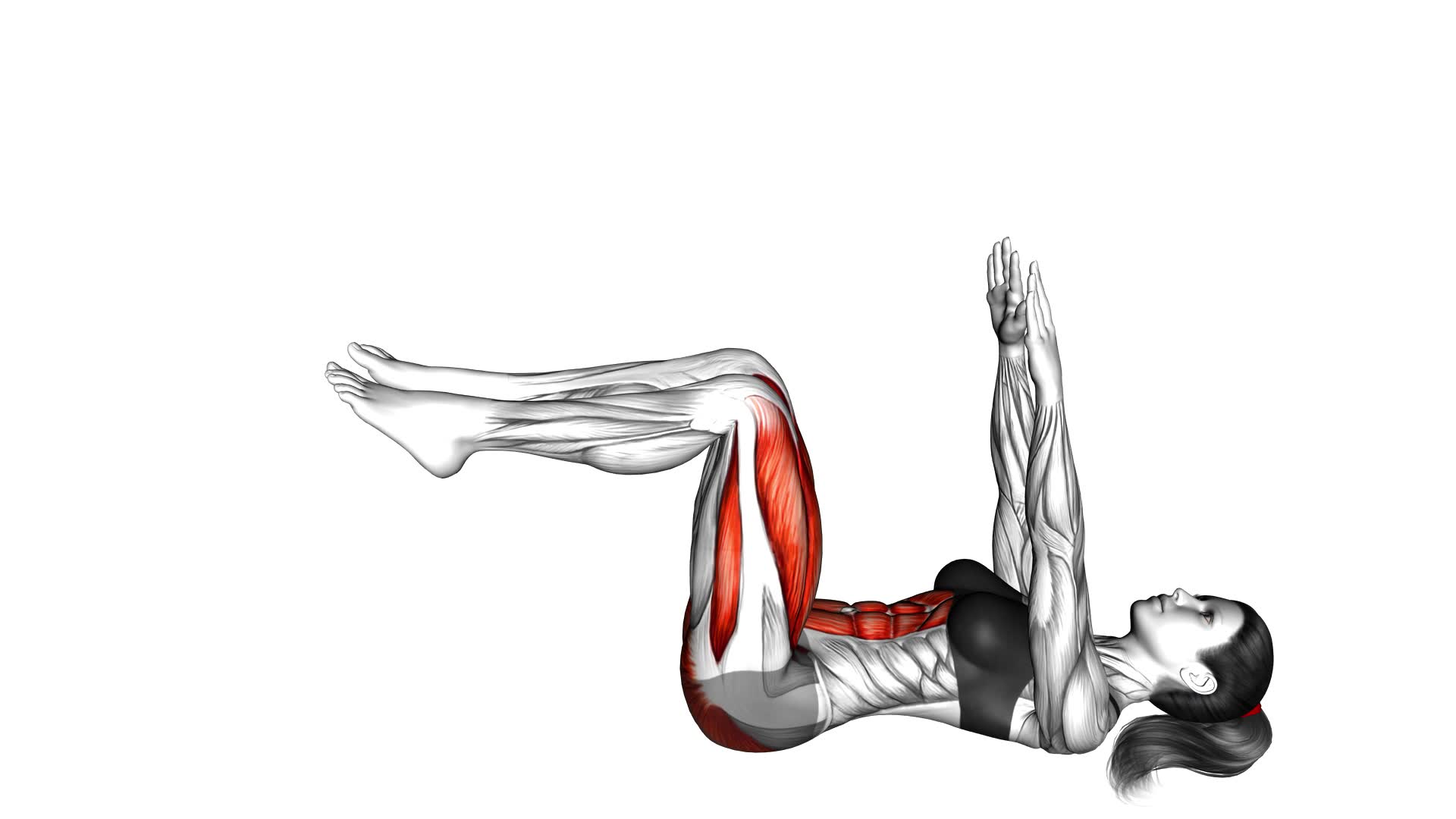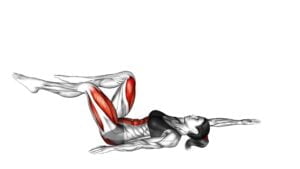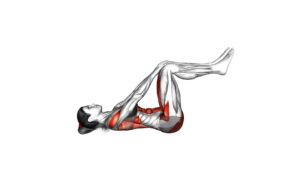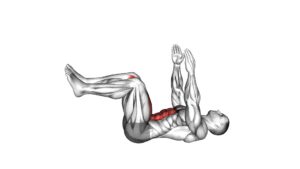Dead Bug (female) – Video Exercise Guide & Tips

Looking to strengthen your core and improve your overall fitness? Look no further than the dead bug exercise.
Watch This Exercise Video
In this video exercise guide, we'll show you how to properly perform the dead bug, along with helpful tips and modifications for different fitness levels.
Say goodbye to common mistakes and hello to maximum effectiveness. Get ready to feel the burn and achieve your fitness goals with this powerful exercise.
Let's get started!
Key Takeaways
- The Dead Bug exercise is an effective core strengthening exercise that targets multiple muscle groups.
- Proper form and technique are important to ensure the exercise is performed correctly and to avoid potential injuries.
- Modifications can be made to the exercise to tailor it to different fitness levels, making it accessible to beginners and challenging for advanced individuals.
- Maximizing the effectiveness of the Dead Bug exercise can be achieved through variations, proper breathing, and engaging the core muscles.
Benefits of the Dead Bug Exercise
To understand the benefits of the Dead Bug exercise, you should know that it's an effective core strengthening exercise that targets multiple muscle groups. Core strength is crucial for overall stability and functionality in your everyday activities. By incorporating the Dead Bug exercise into your workout routine, you can strengthen the muscles in your abs, lower back, and hips, which are all vital for maintaining a stable and supported spine.
Stability training plays a vital role in preventing injuries and improving your performance in sports and physical activities. The Dead Bug exercise specifically focuses on improving stability by engaging your deep core muscles, including the transversus abdominis and the multifidus. These muscles help stabilize your spine and pelvis, improving your overall posture and balance.
Additionally, the Dead Bug exercise challenges your coordination and motor control, making it a great exercise for athletes and individuals looking to enhance their athletic performance. By practicing this exercise regularly, you can develop a strong and stable core, which won't only improve your physical performance but also reduce the risk of lower back pain and injuries.
Incorporating the Dead Bug exercise into your fitness routine will help you develop a strong core, improve stability, and enhance your overall physical performance. So, don't hesitate to give it a try and experience the incredible benefits for yourself.
Proper Form and Technique
Mastering proper form and technique is crucial for maximizing the effectiveness of the Dead Bug exercise. To ensure you're getting the most out of this exercise, it's important to dispel some common misconceptions.
One misconception is that you should let your lower back arch off the ground during the movement. However, this can lead to strain and improper activation of the core muscles. Instead, focus on keeping your lower back pressed firmly against the floor, engaging your core throughout the entire exercise.
Another misconception is that speed is more important than control. While it may be tempting to rush through the repetitions, it's essential to prioritize control and stability. Slow and controlled movements allow for better muscle activation and engagement, leading to more effective results.
If you find the Dead Bug exercise too challenging or if you're looking for alternative exercises to add variety to your routine, there are a few options to consider. Plank variations, such as the forearm plank or side plank, target the core muscles and provide a similar stability challenge. Additionally, exercises like Russian twists or bicycle crunches can also engage the core muscles effectively.
Modifications for Different Fitness Levels
If you're looking to adapt the Dead Bug exercise to your fitness level, there are a few modifications that you can incorporate into your routine.
For beginners, it's important to start slow and focus on mastering the basics before progressing to more advanced variations. One modification you can try is to keep your legs bent at a 90-degree angle instead of extending them fully. This will help reduce the strain on your lower back and make the exercise more manageable. Another beginner modification is to only lower one arm or leg at a time, instead of both simultaneously. This will allow you to build strength and stability in a controlled manner.
On the other hand, if you're more advanced and looking for a challenge, there are several variations you can try. One option is to add resistance by holding a dumbbell or medicine ball in your hands. This will increase the difficulty and engage your core muscles even more. Another advanced variation is to perform the exercise on an unstable surface, such as a balance board or stability ball. This will require greater coordination and control to maintain your balance throughout the movement.
By incorporating these modifications, you can tailor the Dead Bug exercise to your current fitness level, whether you're a beginner or more advanced.
Now, let's move on to the next section and discuss some common mistakes to avoid to ensure you're getting the most out of this exercise.
Common Mistakes to Avoid
To ensure you get the most out of the Dead Bug exercise, it's important to be aware of common mistakes to avoid. Proper technique is crucial in order to maximize the effectiveness of this exercise and prevent any potential injuries.
One common mistake is lifting your head and neck too high off the ground. This not only puts unnecessary strain on your neck, but it also takes away from the engagement of your core muscles. Instead, focus on keeping your head and neck in a neutral position, with a slight chin tuck.
Another mistake to avoid is arching your lower back excessively. This can lead to lower back pain and take away from the activation of your abdominal muscles. Instead, keep your lower back pressed firmly against the ground throughout the exercise.
Lastly, make sure to maintain a steady and controlled movement throughout the entire exercise. Avoid any jerky or uncontrolled movements, as this can increase the risk of injury.
By avoiding these common mistakes and practicing proper technique, you'll be able to fully engage your core muscles and get the most out of the Dead Bug exercise.
Now, let's move on to the next section, where we'll discuss some tips for maximizing the effectiveness of the Dead Bug.
Tips for Maximizing the Effectiveness of the Dead Bug
To maximize the effectiveness of the Dead Bug exercise, focus on maintaining proper form and engaging your core muscles throughout the movement. Here are some tips to help you get the most out of this exercise:
- Common variations:
- Single leg Dead Bug: Extend one leg at a time while keeping the other leg in the starting position.
- Weighted Dead Bug: Hold a dumbbell or medicine ball in your hands while performing the exercise to increase the challenge.
- Dead Bug with a twist: As you extend your arm and leg, rotate your torso to the opposite side, engaging your obliques.
- Breathing techniques:
- Exhale as you extend your arm and leg away from your body. This engages your deep core muscles and helps stabilize your spine.
- Inhale as you bring your arm and leg back to the starting position. This allows your diaphragm to relax and prepares you for the next repetition.
Remember, proper form and engagement of your core muscles are key to maximizing the effectiveness of the Dead Bug exercise. By incorporating common variations and utilizing proper breathing techniques, you can challenge your core and improve overall stability.
Stay focused, stay consistent, and watch your core strength soar!
Frequently Asked Questions
How Many Calories Does the Dead Bug Exercise Burn?
The dead bug exercise can be a great way to burn calories and strengthen your core. It's an effective exercise that targets your abs, back, and hip muscles. The exact number of calories burned during the exercise can vary depending on factors like your weight, intensity, and duration. However, on average, you can expect to burn around 5-7 calories per minute.
Can the Dead Bug Exercise Help With Lower Back Pain?
The dead bug exercise is a great way to strengthen your core muscles and improve stability. It targets the muscles in your abdomen, lower back, and hips. By engaging these muscles, the dead bug exercise can help alleviate lower back pain and improve your overall posture.
There are different variations of the dead bug exercise that you can try to challenge yourself and work different muscle groups. Incorporate this exercise into your routine for its many benefits. Keep pushing yourself!
Is the Dead Bug Exercise Suitable for Pregnant Women?
The dead bug exercise can be modified to suit pregnant women. It's a great way to strengthen your core muscles without putting too much pressure on your lower back.
However, it's always important to consult with your healthcare provider before starting any exercise routine during pregnancy.
If you're looking for alternative core exercises, you can try pelvic tilts, cat-cow stretch, and standing side crunches. Remember to listen to your body and modify any exercises as needed.
Can the Dead Bug Exercise Be Done Without a Gym Membership or Equipment?
Looking to strengthen your core without the need for a gym membership or equipment? The dead bug exercise is perfect for you!
This effective core workout can be done anywhere, anytime, with no equipment needed.
By lying on your back and extending opposite arm and leg while keeping your core engaged, you'll engage your abs, lower back, and hip muscles.
Get ready to feel the burn and see results!
How Often Should the Dead Bug Exercise Be Performed for Optimal Results?
To achieve optimal results with the dead bug exercise, it's important to consider the frequency at which you perform it.
By incorporating variations of the dead bug exercise into your routine, you can target different muscle groups and prevent boredom.
Consistency is key, so aim to do the dead bug exercise at least 2-3 times per week.
Remember, the more you challenge yourself and push your limits, the better the results will be.
Keep up the great work!
Conclusion
Incorporating the dead bug exercise into your workout routine can provide numerous benefits for your core strength and stability. By focusing on proper form and technique, you'll maximize the effectiveness of this exercise and avoid common mistakes.
Additionally, modifications can be made to accommodate different fitness levels, making it accessible for everyone. Stay consistent with your dead bug practice and watch as your core muscles become stronger and more defined.
Keep up the great work and keep pushing yourself towards your fitness goals!

Author
Years ago, the spark of my life’s passion ignited in my mind the moment I stepped into the local gym for the first time. The inaugural bead of perspiration, the initial endeavor, the very first surge of endorphins, and a sense of pride that washed over me post-workout marked the beginning of my deep-seated interest in strength sports, fitness, and sports nutrition. This very curiosity blossomed rapidly into a profound fascination, propelling me to earn a Master’s degree in Physical Education from the Academy of Physical Education in Krakow, followed by a Sports Manager diploma from the Jagiellonian University. My journey of growth led me to gain more specialized qualifications, such as being a certified personal trainer with a focus on sports dietetics, a lifeguard, and an instructor for wellness and corrective gymnastics. Theoretical knowledge paired seamlessly with practical experience, reinforcing my belief that the transformation of individuals under my guidance was also a reflection of my personal growth. This belief holds true even today. Each day, I strive to push the boundaries and explore new realms. These realms gently elevate me to greater heights. The unique combination of passion for my field and the continuous quest for growth fuels my drive to break new ground.



